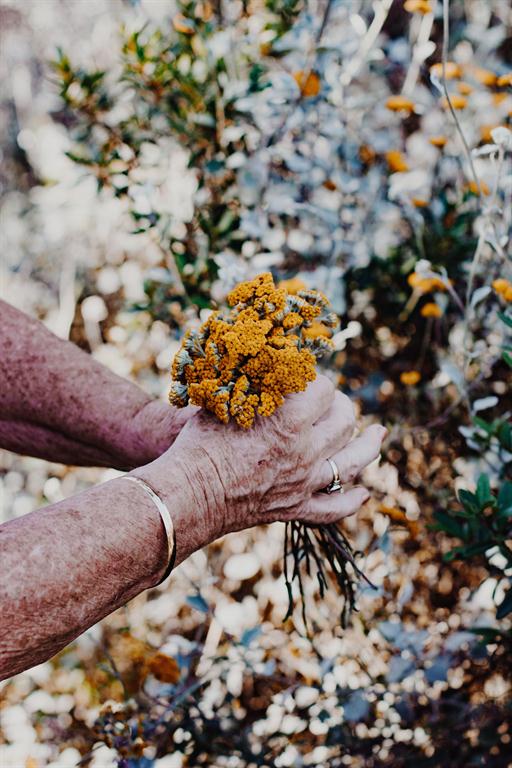Average life expectancy with Parkinson’s
Most people with Parkinson’s disease have a normal or near-normal life expectancy.
Modern medications and treatments mean that people can manage their symptoms and reduce the occurrence or severity of complications, which might otherwise be fatal.
Several factors can influence an individual’s life expectancy, including the type of Parkinson’s disease, the age of onset, and a person’s access to healthcare.
A 2018 study in the journal Neurology indicates that survival among those with Parkinson’s disease is highly dependent on the type and characteristics of the disorder.
The researchers report that those with Parkinson’s disease and normal cognitive function appear to have “a largely normal life expectancy.”
Research involving more than 12 000 people indicates that Parkinson’s can reduce life expectancy if a person receives a diagnosis before the age of 70 years.
A 2015 study with 206 participants found that ethnicity was an important factor, with non-white people — including Black and Asian people — having an increased risk of earlier death.
In their paper, the authors suggest that this finding reflects sociocultural and economic differences, which may prevent some people from accessing specialized medical care.
Is it fatal?
Parkinson’s disease itself is not fatal. However, although people do not die from Parkinson’s disease, they may die from complications of the condition.
The disease can put the body under stress, which makes people more likely to develop serious, life threatening infections. For example, research into the deaths of 219 people with idiopathic Parkinson’s disease reported that 45% of these individuals appeared to have died from pneumonia. Idiopathic means that the disease did not have a clear or known cause.
The American Parkinson Disease Association also cite falls as a common cause of death. Those with Parkinson’s are more likely than others to fall and injure themselves. Serious falls and complications arising from surgery to treat the injuries can both be fatal.
There are five stages of Parkinson’s disease:
Stage 1
During this stage, the symptoms are mild and unlikely to affect day-to-day functioning or life expectancy. The early signs of the disease may include tremors or shakes and changes in posture, gait, and facial expressions.
Stage 2
Stage 2 symptoms are moderate and become more noticeable than those in stage 1. They may begin to affect daily life and tasks but are unlikely to affect life expectancy. Symptoms in this stage include:
· difficulty walking
· muscle stiffness
· noticeable changes to posture
· speech difficulties
Progression to this stage may take months or years.
Stage 3
At this stage, people experience greater difficulty with balance and movement. They are still independent, but daily tasks can be challenging. Falls are more common once people reach stage 3.
While the symptoms in stage 3 are still unlikely to affect life expectancy, a serious fall may cause injuries and other complications.
Stage 4
Stage 4 symptoms are severe and limiting, and people in this stage are unable to live alone due to safety concerns. While they may be able to stand without assistance, they will require help to move and perform other tasks.
Complications arising in stage 4, particularly those resulting from the increased risk of falling, may affect a person’s quality of life.
Stage 5
The symptoms at this advanced stage are debilitating. A person may be unable to stand or walk, and they may require a wheelchair. Those in stage 5 require assistance at all times and for all activities. Hallucinations and delusions are common and affect 20–40% of people with the condition. This number increases with disease progression.
In stage 5, people may be more prone to injuries and infections, which could cause complications or be fatal. However, most people will still have a normal or near-normal life expectancy.
Treatment options for each stage
There is no cure for Parkinson’s disease, but medications can help manage the symptoms. In some cases, surgery may be necessary. Lifestyle changes can also help, especially in the earlier stages.
Stage 1
Treatments in stage 1 may include physical therapy to improve balance and address muscle stiffness. Regular exercise can also be important to improve strength, flexibility, and balance. Eating a balanced diet may reduce some of the Parkinson’s symptoms that can present in stage 1 or in the later stages.
Other nutrients that a balanced diet includes, such as omega-3 fats and magnesium, may boost cognition, help with anxiety, and more.
Stage 2
Exercise and physical therapy may still be beneficial at this stage. It may also be helpful for a person to work with a speech-language pathologist to address speech problems.
Those who are having difficulty performing everyday tasks may benefit from working with an occupational therapist. This type of therapy helps people learn new ways of performing tasks such as eating, dressing, and moving.
Certain medications may help minimize issues with movement and tremors. Some people with Parkinson’s may wish to use alternative therapies to manage stress and anxiety and improve overall well-being. These may include:
· yoga
· tai chi
· meditation
· massage therapy
· music therapy
· art therapy
Stage 3
Treatments and remedies from earlier stages may still be beneficial for those in stage 3. These include:
· exercise
· a balanced diet
· physical therapy
· speech-language therapy
· occupational therapy
· medications
· alternative therapies
Stages 4 and 5
In some cases, doctors may change the delivery of some medications. For example, those with more advanced Parkinson’s may receive an infusion of carbidopa-levodopa rather than an oral dose. The continual infusion keeps the blood levels of the drugs constant.
In these stages, people may undergo surgical procedures, such as deep brain stimulation (DBS). DBS involves implanting electrodes into the brain to emit electrical pulses that help reduce symptoms. – Source: MedicalNewsToday
Several factors can influence an individual’s life expectancy, including the type of Parkinson’s disease, the age of onset, and a person’s access to healthcare.
A 2018 study in the journal Neurology indicates that survival among those with Parkinson’s disease is highly dependent on the type and characteristics of the disorder.
The researchers report that those with Parkinson’s disease and normal cognitive function appear to have “a largely normal life expectancy.”
Research involving more than 12 000 people indicates that Parkinson’s can reduce life expectancy if a person receives a diagnosis before the age of 70 years.
A 2015 study with 206 participants found that ethnicity was an important factor, with non-white people — including Black and Asian people — having an increased risk of earlier death.
In their paper, the authors suggest that this finding reflects sociocultural and economic differences, which may prevent some people from accessing specialized medical care.
Is it fatal?
Parkinson’s disease itself is not fatal. However, although people do not die from Parkinson’s disease, they may die from complications of the condition.
The disease can put the body under stress, which makes people more likely to develop serious, life threatening infections. For example, research into the deaths of 219 people with idiopathic Parkinson’s disease reported that 45% of these individuals appeared to have died from pneumonia. Idiopathic means that the disease did not have a clear or known cause.
The American Parkinson Disease Association also cite falls as a common cause of death. Those with Parkinson’s are more likely than others to fall and injure themselves. Serious falls and complications arising from surgery to treat the injuries can both be fatal.
There are five stages of Parkinson’s disease:
Stage 1
During this stage, the symptoms are mild and unlikely to affect day-to-day functioning or life expectancy. The early signs of the disease may include tremors or shakes and changes in posture, gait, and facial expressions.
Stage 2
Stage 2 symptoms are moderate and become more noticeable than those in stage 1. They may begin to affect daily life and tasks but are unlikely to affect life expectancy. Symptoms in this stage include:
· difficulty walking
· muscle stiffness
· noticeable changes to posture
· speech difficulties
Progression to this stage may take months or years.
Stage 3
At this stage, people experience greater difficulty with balance and movement. They are still independent, but daily tasks can be challenging. Falls are more common once people reach stage 3.
While the symptoms in stage 3 are still unlikely to affect life expectancy, a serious fall may cause injuries and other complications.
Stage 4
Stage 4 symptoms are severe and limiting, and people in this stage are unable to live alone due to safety concerns. While they may be able to stand without assistance, they will require help to move and perform other tasks.
Complications arising in stage 4, particularly those resulting from the increased risk of falling, may affect a person’s quality of life.
Stage 5
The symptoms at this advanced stage are debilitating. A person may be unable to stand or walk, and they may require a wheelchair. Those in stage 5 require assistance at all times and for all activities. Hallucinations and delusions are common and affect 20–40% of people with the condition. This number increases with disease progression.
In stage 5, people may be more prone to injuries and infections, which could cause complications or be fatal. However, most people will still have a normal or near-normal life expectancy.
Treatment options for each stage
There is no cure for Parkinson’s disease, but medications can help manage the symptoms. In some cases, surgery may be necessary. Lifestyle changes can also help, especially in the earlier stages.
Stage 1
Treatments in stage 1 may include physical therapy to improve balance and address muscle stiffness. Regular exercise can also be important to improve strength, flexibility, and balance. Eating a balanced diet may reduce some of the Parkinson’s symptoms that can present in stage 1 or in the later stages.
Other nutrients that a balanced diet includes, such as omega-3 fats and magnesium, may boost cognition, help with anxiety, and more.
Stage 2
Exercise and physical therapy may still be beneficial at this stage. It may also be helpful for a person to work with a speech-language pathologist to address speech problems.
Those who are having difficulty performing everyday tasks may benefit from working with an occupational therapist. This type of therapy helps people learn new ways of performing tasks such as eating, dressing, and moving.
Certain medications may help minimize issues with movement and tremors. Some people with Parkinson’s may wish to use alternative therapies to manage stress and anxiety and improve overall well-being. These may include:
· yoga
· tai chi
· meditation
· massage therapy
· music therapy
· art therapy
Stage 3
Treatments and remedies from earlier stages may still be beneficial for those in stage 3. These include:
· exercise
· a balanced diet
· physical therapy
· speech-language therapy
· occupational therapy
· medications
· alternative therapies
Stages 4 and 5
In some cases, doctors may change the delivery of some medications. For example, those with more advanced Parkinson’s may receive an infusion of carbidopa-levodopa rather than an oral dose. The continual infusion keeps the blood levels of the drugs constant.
In these stages, people may undergo surgical procedures, such as deep brain stimulation (DBS). DBS involves implanting electrodes into the brain to emit electrical pulses that help reduce symptoms. – Source: MedicalNewsToday






Comments
Namibian Sun
No comments have been left on this article